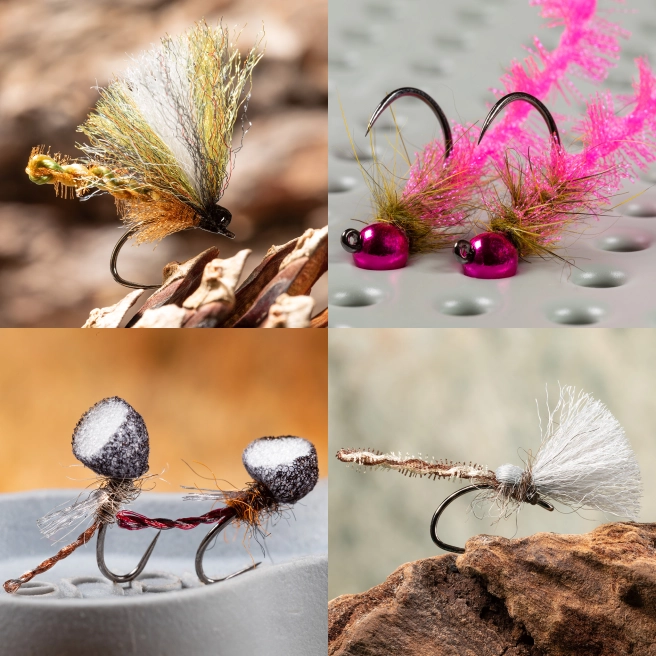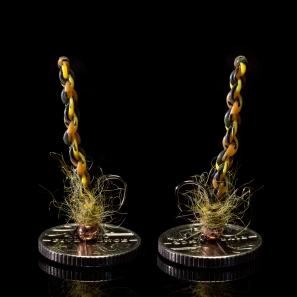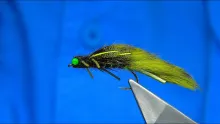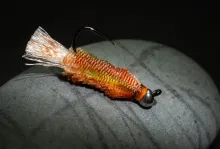At the vice no one can hear you scream.
I have to admit that this one came about by accident. I’d sat down to tie an alternative to a squirmy worm using silicone leg strands twisted and furled together to form the body. Once I had tied in the furled section and let go of the free ends the fly self-assembled and took me right back to 1979 and jumping out of my seat in the cinema. With a long flexible body and splayed forward facing legs what else was I going to call it?
Furling is a very useful technique in fly tying. It opens a door to many different imitations or approximations with detached or extended bodies. On a nymph or an attractor pattern it adds flexibility and movement in the water, as in the present pattern. In dry flies it allows the use of a smaller hook for a given overall size of fly, and less steel is always a good for floatation.
Furling a body is the same process used for making rope; two or more twisted strands of fibre are wrapped together such that the twists act against each other and hold the rope together. A furled fly body is formed by folding one or more strands of twisted material together to make a rope with all the free strands at one end. The furled strands can be all the same material and the same colour, the same material in different colours, or a mix of materials and colours. Wherever your imagination takes you.
Furled bodies. A dry fly with furled poly-yarn and organza body, tungsten bead grayling flies with pink stripped organza ribbon, foam topped emergers with furled red and black organza fibres and an emerger with a body furled with brown and cream stripped organza ribbon.
Furling a neat body is easier if you use your vice to help. Clamp a decent sized barbless hook in the vice by the shank with the point up. Grasp the ends of the body material between your fingers and thumbs and roll to twist the strands. Place the middle of the twisted bunch around the hook point and bring the ends together to form a loop and hold them in tension against the hook. Lift the loop off the hook to allow the end to twist and furl the strands. Clip the ends together in hackle pliers while you remove the hook and replace it with your chosen fly hook.
The trick to getting a smooth evenly furled body is getting the right amount of twist in the fibres. Too little and the furled body will be loose and open, too much and the body will tend to kink as the twists fight against each other. With most materials you can reverse the process and repeat with more or less twisting until you are happy with the result.
While I tied and tested the Facehugger for grayling I’m now thinking that on a bigger stronger hook it might be worth a go twitched along the bottom of a lake I know that has some very big carp. Anyway, if you do tie a few, be careful when opening your fly box ...
Alien
For those not familiar with Ridley Scott's brilliant 1979 movie Alien, the name of this fly may not mean much, but it's named after a xenomorph lifeform that literally hugs the face of those it "infects". British actor John Hurt gets "hugged" in a jump scare scene in the movie, which is definitely still worth watching, being one of the best sci-fi-movies ever made.
- Log in to post comments















